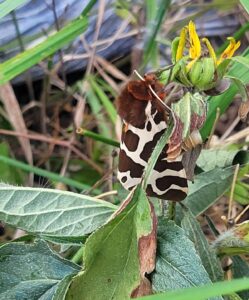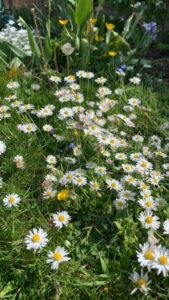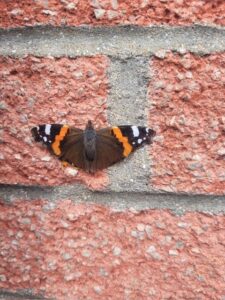
Since Jai left home to study Environmental Conservation at Bournemouth University, he has become even more fascinated by the environment. After being accepted at university he discovered that his college, although affiliated to Bournemouth University, was based in rural Somerset. Quickly he realised this wasn’t going to be studying on the beach as had hoped but learnt so much more being surrounded by Somerset’s bewitching rolling landscape. Jai learnt that everything we see outdoors is connected, including the micro-organisms in the earth, the roots of the plants, the air we breathe, and the weather, and that plants are connected to the animals that rely on them for their shelter and sustenance.
Since then Jai has always wanted an outdoor space to call his own, where he would be able to plant fruit trees and bee-friendly shrubs and allow areas to grow wild to attract insects and birds etc. Jai’s father has always been a keen gardener although when he grew up in Hong Kong, he would be helping his father in the paddy fields growing rice and other crops. Jai grew up with a very manicured garden. The lines are straight, every leaf is picked up, no weeds. It was a pure grass lawn which suited his parents but over time Jai noticed there were fewer and fewer starlings. Starlings prefer longer grass that is rich in worm activity, sadly they eventually disappeared from the family’s garden completely.
Fast forward 20 odd years and Jai finally has his own space. It originally reminded of his father’s manicured lawn, it was all grass apart from one patch of bare earth, where the previous owners made some attempt to grow vegetables. Valerian was growing through the neighbour’s chain link fence into the garden which Jai knew attracted butterflies, so this left these to flower. There were sparrows in the hedge at the back of the garden and that was it. Jai set to work straight away and bought every sickly plant in the sales and nursed them back to health in his garden. Having been in his new house for over a year now Jai can see wildlife slowly and gradually returning. The garden now has wrens and a hedgehog too, it has also seen a firecrest and some robins perched on a pile of hedge clippings. Insect houses have been added to the garden and as soon as Jai planted verbenas and brassicas, the butterflies, including migratory painted ladies and red admirals, came to visit along with lots of ladybirds and garden tiger moths.
The ladybirds have been put to work straight away and they made light work of the aphids invading the roses and cosmos! They weren’t deterred by the ants and finished gobbling them up in 4 days. The cabbage white butterflies have made a regular appearance working their way through my cauliflower and nasturtiums!
Then the bats appeared, and it prompted him to plant more plants that attract moths and butterflies such as Honeysuckle and Monarda.
All the autumn leaves and grass clippings are raked up and pushed into the flower beds, this acts as a mulch for the new plants and helps to promote soil biota and improve organic matter content which helps to keep the soil and my plants healthy. This summer Jai hardly needed to water the plants as the mulch helped to retain moisture, he knew the worms, ants, woodlice, and slugs would do their job in breaking this down and all the nutrients would be returned to the ground for the next year.
If you would like to hear more about how you can increase biodiversity in your gardens or amenity areas, please contact ACD Environmental.



